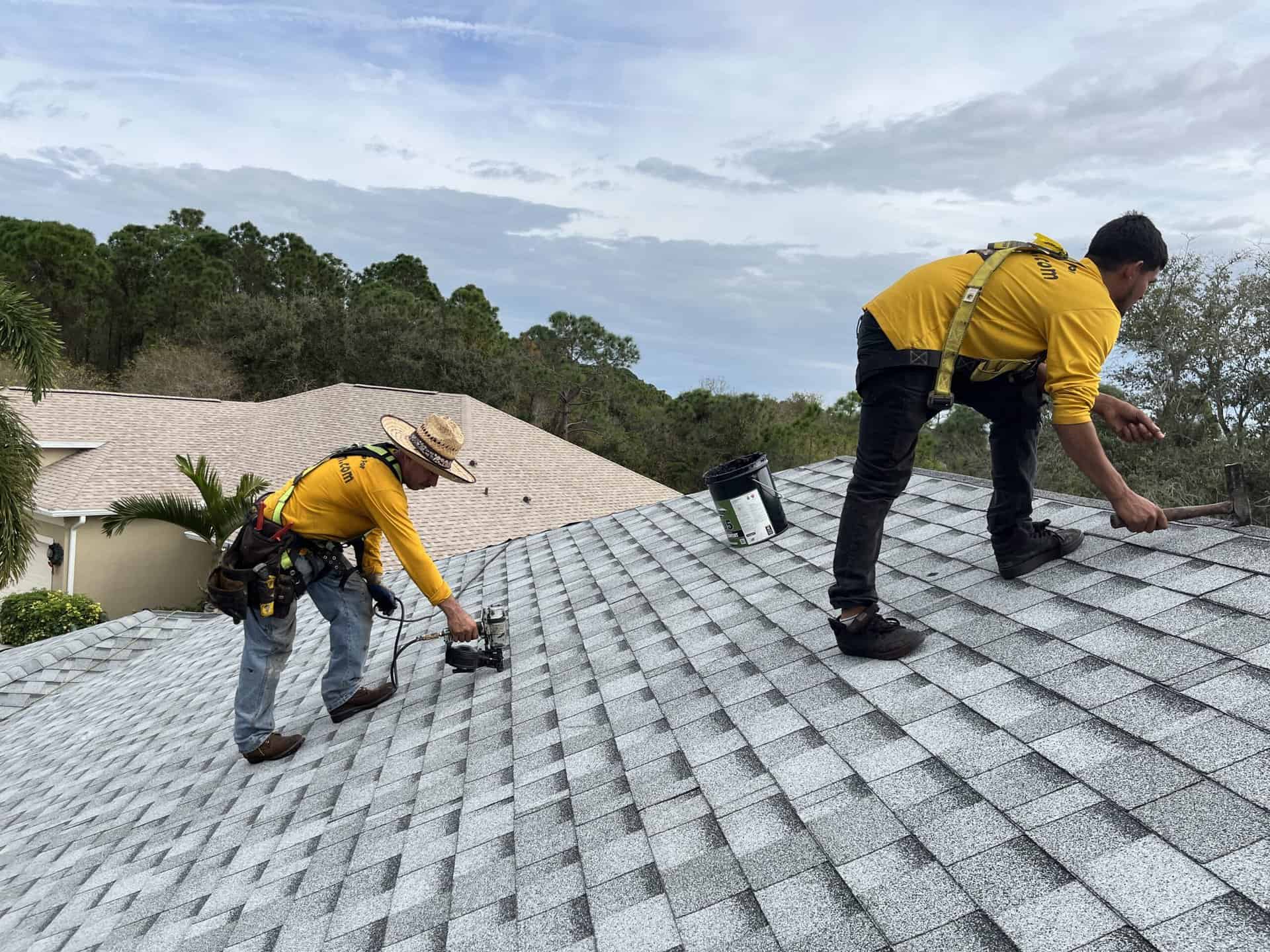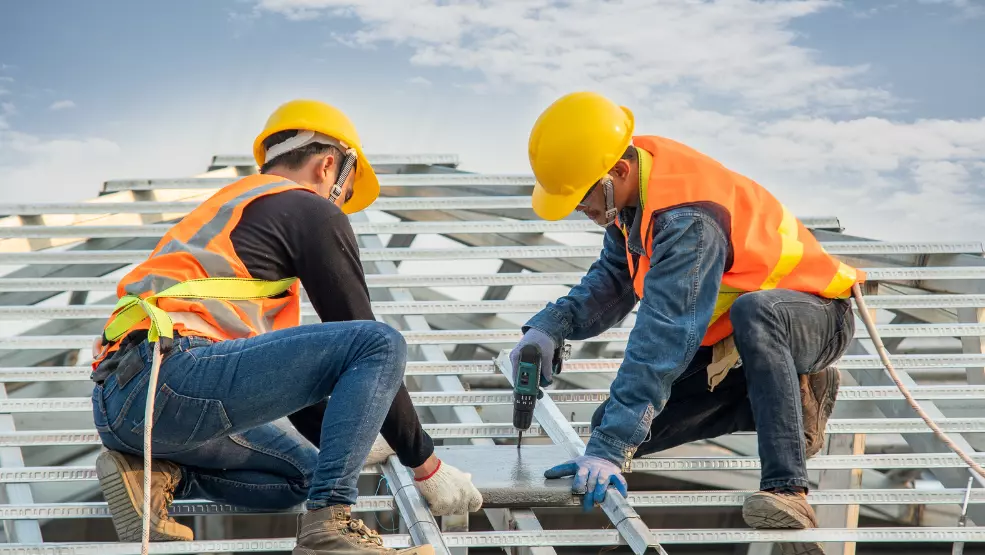Important Tips for Effective Roofing System Upkeep From Leading Roof Covering Professionals
Keeping a roofing is essential for the durability of a home. Leading roofing specialists stress the importance of routine evaluations to capture issues early. Furthermore, proper maintenance methods can prevent expensive repairs down the line. Property owners frequently overlook simple jobs that add to a roofing system's health and wellness. Recognizing these important ideas can make a substantial difference. However, several might question what particular strategies are most effective.
Routine Assessments: Key to Very Early Issue Discovery
Although many home owners may neglect their roofings, normal inspections play a vital role in identifying potential problems prior to they rise right into expensive fixings. A detailed exam can disclose signs of wear, such as missing out on shingles, cracks, or rusted flashing. These seemingly minor issues can lead to significant leakages, architectural damages, or mold and mildew growth if left unaddressed.
Professionals suggest performing evaluations a minimum of twice a year, preferably in the springtime and loss. This proactive strategy allows house owners to capture problems early, making sure the long life of the roofing. Additionally, after extreme climate events, such as tornados or heavy snowfall, an assessment is vital to analyze any resulting damages. Routine evaluations not only enhance the roofing system's lifespan however also provide peace of mind, recognizing that the home is well-protected. By prioritizing this element of maintenance, property owners can prevent unforeseen costs and preserve the honesty of their building.
Maintain Gutters and Downspouts Clear
Regular maintenance of downspouts and gutters is vital for preventing water damage to a home. Clogged up gutters can cause overflowing water, which may harm the foundation, roof, and home siding. To keep peak function, homeowners need to regularly check and clean seamless gutters, especially throughout fall when leaves and debris accumulate.
Using a durable ladder, individuals should get rid of any type of clogs, assuring that water moves easily with the system. It is recommended to examine downspouts for blockages as well; a blocked downspout can create water to back up and overflow.
Furthermore, property owners need to validate that rain gutters are firmly attached and properly sloped to route water toward downspouts. Installing seamless gutter guards can likewise assist reduce particles accumulation and decrease maintenance regularity. By keeping seamless gutters and downspouts clear, property owners can secure their residential property from expensive water damages and prolong the lifespan of their roof.
Trim Overhanging Branches
To guarantee the longevity of a roofing system, home owners should prioritize trimming overhanging branches that pose a threat to their roof. Branches can create considerable damage via various means, including straight contact during storms or heavy winds, which might cause scrapes or punctures in roof covering materials. Additionally, overhanging branches can help with the development of moss and algae, as they supply shade and dampness retention, jeopardizing the roofing system's stability.
On a regular basis examining the distance in between tree arm or legs and the roofing is crucial. Property owners should aim to keep a safe clearance of a minimum of six feet to decrease possible hazards. Making use of expert tree services can assure correct and safe cutting, protecting against unintentional damages to the home. By proactively handling tree development, homeowners can protect their roof coverings, improving their life-span and decreasing future upkeep expenses. Finally, regular branch cutting is an important facet of reliable roof upkeep.
Inspect for Indicators of Damages
Evaluating a roofing for signs of damages is essential for maintaining its structural integrity and longevity (Roof Replacement). Homeowners need to carry out aesthetic checks at the very least twice a year, focusing on usual signs of problems. Missing, split, or curled shingles can signify deterioration, while discoloration may suggest water damage or leakages. On top of that, property owners should analyze flashing around smokeshafts, vents, and skylights for rust or spaces, as these areas are susceptible to leaks
Seamless gutters and downspouts must be cleared of particles, as clogs can lead to water merging and subsequent roofing system damages. Inside assessments are additionally important; water discolorations on ceilings or wall surfaces might suggest roofing leakages. Mold development in attic rooms can show extended wetness direct exposure. By on a regular basis looking for these signs of damages, house owners can attend to issues early, protecting against costly repairs and making sure the roof covering remains in prime condition.
Keep Appropriate Ventilation
Proper ventilation is essential for keeping a healthy and balanced roof covering and extending its life-span. Ample air flow stops dampness build-up, which can bring about mold and mildew and structural damages. In addition, readjusting air flow according to the seasons can optimize power efficiency and comfort within the home.

Value of Airflow
While lots of property owners may forget the value of air flow, preserving appropriate ventilation is important for the durability of a roof covering. Appropriate air movement assists manage temperature within the attic room, avoiding warmth accumulation that can harm roof materials. This regulation likewise contributes to energy performance, lowering the requirement for excessive a/c throughout hot months. In addition, appropriate ventilation helps in dispersing air equally, reducing the danger of wear and tear on roof covering components. Specialists advise setting up vents purposefully to advertise a continuous flow of air, which assists in preserving a perfect environment. Home owners should focus on airflow when conducting roof upkeep, guaranteeing that their roofs stay intact and useful for years to come.
Stopping Wetness Accumulation
Keeping appropriate ventilation not only controls temperature level yet likewise plays an important role in preventing wetness accumulation within the attic room area. Correct air flow enables the continuous flow of air, which assists to eliminate excess humidity that can collect from different resources, consisting of day-to-day tasks and seasonal changes. Without appropriate air movement, dampness can result in mold and mildew development, wood rot, and damages to insulation, endangering the structural stability of the roofing. Setting up vents, such as soffit and ridge vents, can enhance air blood circulation, making certain that damp air is expelled while fresh air is reeled in. Regularly examining and cleaning up these vents is vital to maintaining their effectiveness, thus securing the roof covering and expanding its lifespan.
Seasonal Air Flow Changes
Seasonal modifications significantly influence the ventilation needs of a roof covering. In warmer months, raised temperature levels can trap warmth in the attic room, causing potential damage and higher power expenses. Appropriate air flow permits heat to leave, promoting a cooler interior setting. On the other hand, throughout chillier months, correct air flow avoids wetness accumulation from snow and ice, which can cause mold and architectural issues. Roofing specialists recommend adjusting air flow systems seasonally, consisting of the usage of ridge vents and soffit vents for peak airflow. Routine assessments ought to assure that any kind of blockages, such as particles or insulation, are gotten rid of. By browse this site maintaining appropriate ventilation throughout the year, homeowners can secure their roofs and boost energy efficiency.
Tidy Your Roofing Surface
Cleaning the roofing system surface area is vital for maintaining its honesty and extending its life expectancy. A clean roofing not just enhances the news home's visual allure yet likewise prevents the buildup of moss, debris, and algae, which can add to damage. Normal cleansing assists to eliminate contaminants that may trap dampness, resulting in potential leaks and structural damage.
Home owners should take into consideration using a soft-bristle brush or a stress washer with a low setup to delicately get rid of dust and developments from the roofing. It is essential to prevent harsh chemicals that can damage roof covering products. Furthermore, security preventative measures ought to be taken; using a tough ladder and wearing suitable equipment is necessary to prevent accidents.

Set Up Specialist Fixings and evaluations
Normal roofing upkeep involves greater than simply keeping the surface tidy; it additionally calls for specialist assessments and fixings to guarantee lasting toughness. Engaging a certified roofing professional for routine inspections is necessary, as they can recognize prospective issues that might go undetected by the untrained eye. These specialists have the know-how to assess the roof's condition, looking for signs of wear, damage, or leakages that can rise right into view publisher site expensive fixings if left unaddressed.
Setting up these evaluations at least twice a year, preferably in spring and fall, assists verify that any kind of required repair services are carried out without delay. In addition, a professional can suggest safety nets to expand the roofing system's life-span. Property owners must prioritize these examinations as component of their general upkeep strategy, understanding that prompt interventions can secure their financial investment and enhance their home's worth. Eventually, proactive treatment via specialist services is key to achieving a trusted and durable roofing system.
Often Asked Questions
Just how Commonly Should I Replace My Roof covering?
The regularity of roof covering substitute depends on materials and ecological aspects. Generally, asphalt tiles last 20-30 years, while metal roofs might endure 40-70 years. Normal inspections help establish the suitable timing for replacement.
What Are the Finest Materials for Roofing?
The most effective materials for roofing consist of asphalt shingles, slate, steel, and floor tile. Each product provides distinct benefits, such as resilience, visual appeals, and power efficiency, permitting home owners to choose according to their particular demands and preferences.
Can I Do My Own Roofing System Fixes?
The question of doing one's own roofing repair services usually occurs (Roof Repair). While some individuals might have the abilities, it is normally a good idea to seek advice from experts to guarantee safety and security and proper adherence to building ordinance and requirements

How Do Weather Condition Conditions Affect Roof Upkeep?
Weather considerably affect roofing upkeep. Severe temperatures, hefty rainfall, and snow buildup can cause damage, while regular examinations during moderate weather condition guarantee timely repair work, maintaining the roofing system's honesty and prolonging its lifespan properly.
What Is the Ordinary Life Expectancy of a Roof?
The average life-span of a roof covering differs considerably based on materials and environmental variables. Generally, asphalt shingles last around 15 to three decades, while metal roofs can endure 40 to 70 years with proper upkeep and care.
Several home owners may overlook their roof coverings, routine evaluations play a vital function in determining prospective concerns before they escalate into pricey repairs. To ensure the durability of a roof covering, property owners must focus on trimming overhanging branches that present a risk to their roofing system. By proactively taking care of tree development, property owners can secure their roofing systems, improving their lifespan and minimizing future upkeep expenses. Checking a roof for indications of damage is important for preserving its structural stability and longevity. While lots of property owners might neglect the value of air movement, preserving appropriate air flow is important for the durability of a roofing.